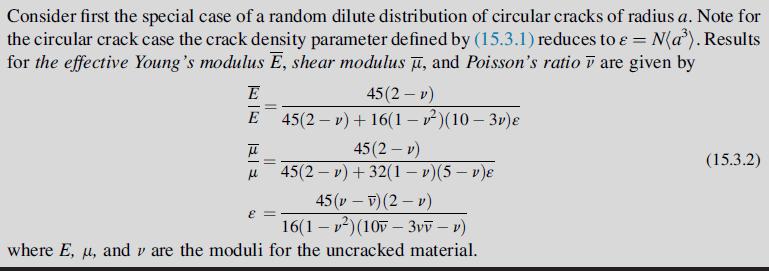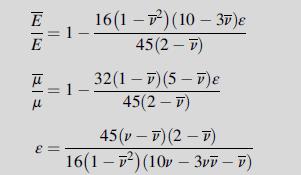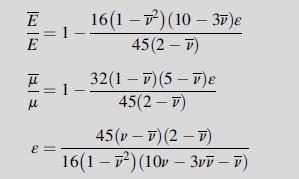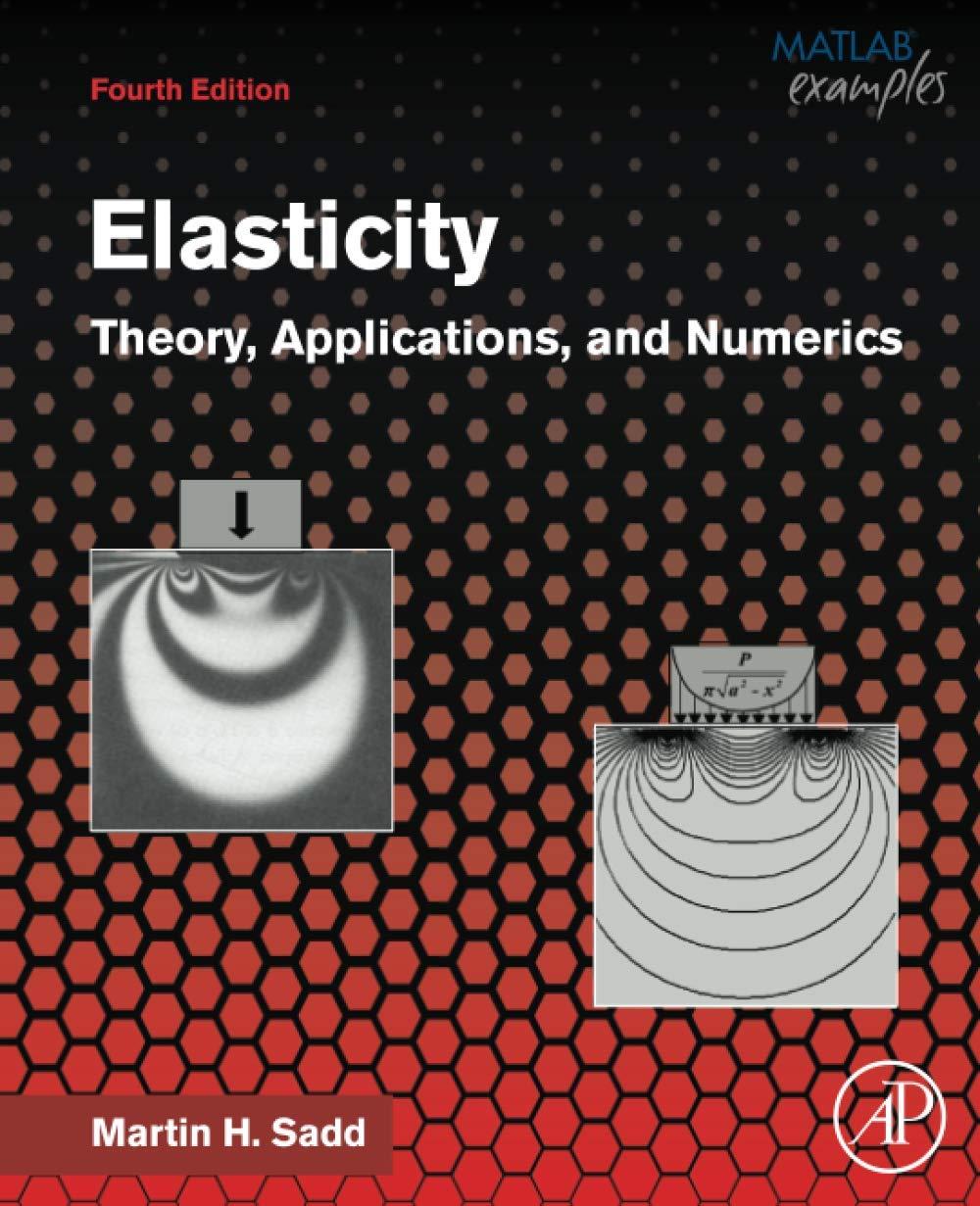For the isotropic self-consistent crack distribution case in Example 15.12, show that for the case v =
Question:
For the isotropic self-consistent crack distribution case in Example 15.12, show that for the case v = 0.5, relation (15.3.4)3 reduces to:

Verify the total loss of moduli at ε = 9/
16. Using these results, develop plots of the effective moduli ratios v̅/v,E̅/
E,µ̄/µ versus the crack density. Compare these results with the corresponding values from the dilute case given in Example 15.10.
Data from example 15.10

Data from example 15.12
Using the self-consistent method, effective moduli for the random distribution case can be developed. The results for this case are given by:

It is interesting to note that as ε→9/16, all effective moduli decrease to zero. This can be interpreted as a critical crack density where the material will lose its coherence. Although it would be expected that such a critical crack density would exist, the accuracy of this particular value is subject to the assumptions of the modeling and is unlikely to match universally with all materials.
Equation 15.3.4

Step by Step Answer:

Elasticity Theory Applications And Numerics
ISBN: 9780128159873
4th Edition
Authors: Martin H. Sadd Ph.D.





